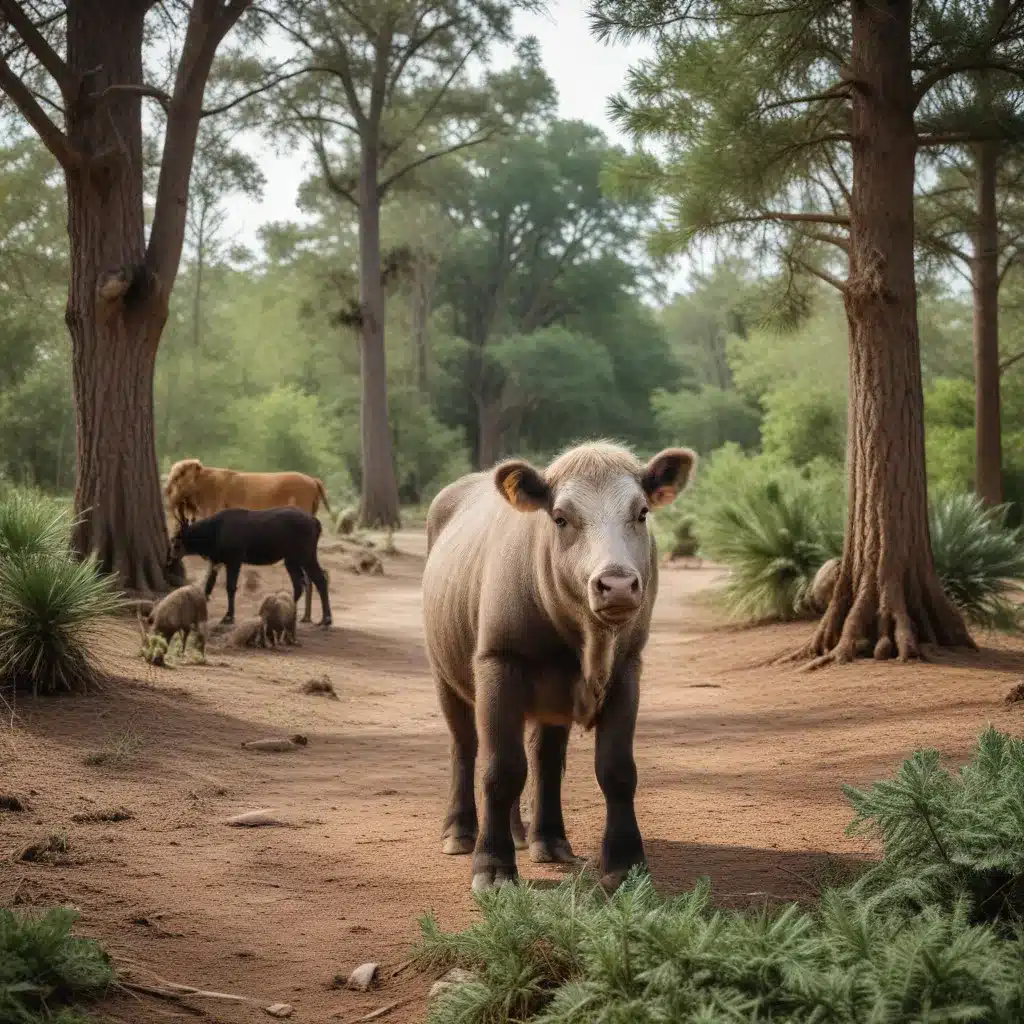
As an educator on the staff of Crooked Pines Farm, I have the privilege of immersing myself in the natural wonders that grace our 10-acre property. From the lush pastures where our dairy cows and sheep graze, to the bustling chicken coops, and the tranquil ponds teeming with aquatic life, there is an undeniable rhythm to the daily activities of our diverse animal inhabitants.
The Diverse Denizens of Crooked Pines
Our farm is home to a vibrant livestock population, including a small herd of Jersey cows that provide us with rich, creamy milk. Their gentle lowing can be heard drifting across the fields as they make their way to the milking parlor each morning. Nearby, a flock of Dorper sheep graze contentedly, their wooly coats shorn each spring to be spun into soft, warm yarn for our family fun DIY crafts.
The bustling poultry pens are a favorite destination for our younger visitors. Here, they can observe our Rhode Island Red and Australorp hens as they cluck and scratch in the dirt, occasionally flapping their wings to take short, euphoric flights. The resident rooster, with his magnificent crown of feathers, proudly announces the start of each new day with his resonant crowing.
Beyond our domestic animals, Crooked Pines Farm is also a haven for an abundance of wildlife. White-tailed deer can often be spotted grazing at the forest’s edge, their delicate movements betraying a constant vigilance. Overhead, red-tailed hawks soar on the thermal currents, their keen eyes scanning the ground for any unfortunate rodents. Even the humble groundhog makes its home in a series of tunnels beneath our vegetable garden, emerging in early spring to herald the changing of the seasons.
These are just a few of the remarkable creatures that call Crooked Pines Farm their home. Each species has its own distinct seasonal patterns and behaviors, contributing to the vibrant tapestry of life woven across our land.
Crooked Pines’ Delicate Ecosystem
The animals that inhabit our farm exist within a carefully balanced ecosystem, their lives closely intertwined with the plants, soil, and climate that sustain them. Our diverse habitats – from the lush meadows to the dense forest groves – provide ample niches for a wide variety of creatures to thrive.
The interspecies interactions we observe are truly fascinating. Our cows, for instance, rely on the presence of dung beetles to help break down their manure, aerating the soil and returning vital nutrients to the earth. Likewise, the sheep’s selective grazing helps to maintain the health of our pastures, ensuring a continuous supply of forage for both livestock and wildlife.
Environmental factors, such as rainfall patterns and temperature fluctuations, also play a crucial role in shaping the rhythms of life on our farm. The arrival of spring rains signals the germination of new grasses and the reemergence of hibernating creatures, while the hot, dry days of summer prompt our animals to seek shade and water sources to stay cool.
Witnessing the Life Cycles of Farm Animals
One of the true joys of working on Crooked Pines Farm is the opportunity to observe the life cycles of our beloved animals up close. Each spring, we eagerly await the arrival of new calves and lambs, marveling as these wobbly-legged newcomers find their footing and begin to nurse from their mothers.
As the young animals grow, we closely monitor their development, taking note of each milestone – from their first tentative steps to the eruption of their adult teeth. We also closely observe their feeding habits, ensuring that our pasture-raised livestock receive a balanced diet of nutritious grasses, supplemented by carefully selected grain rations.
The breeding cycles of our animals are equally fascinating to witness. Our Jersey cows, for example, typically come into estrus (heat) every 21 days, prompting the farmer to carefully time the introduction of our herd sire. Similarly, our Dorper ewes follow a seasonal breeding pattern, lambing in the spring to take advantage of the abundant forage available.
Appreciating the Roles of Farm Animals
The animals of Crooked Pines Farm play a vital role in our agricultural ecosystem, contributing to the overall productivity and sustainability of our operations. Our dairy cows, for instance, not only provide us with rich, creamy milk for our farm-to-table recipes, but their manure also serves as a valuable organic fertilizer for our vegetable gardens and orchards.
Beyond their direct contributions to food production, our animals also engage in a variety of symbiotic relationships that benefit the broader farm environment. The chickens, for example, help to control the population of insect pests that might otherwise threaten our crops, while their nitrogen-rich droppings enrich the soil for our companion planting efforts.
At Crooked Pines, we also take great pride in our role as stewards of the land, actively participating in conservation efforts to protect the diverse habitats that sustain our animal inhabitants. This might involve planting pollinator-friendly wildflowers to support our buzzing insect friends or implementing rotational grazing strategies to promote the long-term health of our pastures.
By immersing ourselves in the rhythms of Crooked Pines Farm’s animal kingdom, we gain a deeper appreciation for the intricate web of life that surrounds us. Whether it’s the gentle lowing of our cows, the joyful chirping of our chickens, or the graceful flight of a hawk overhead, each creature plays a vital role in the delicate balance of our farm ecosystem. It is our privilege to share these wonders with our visitors, inspiring the next generation of farm naturalists and environmental stewards.


